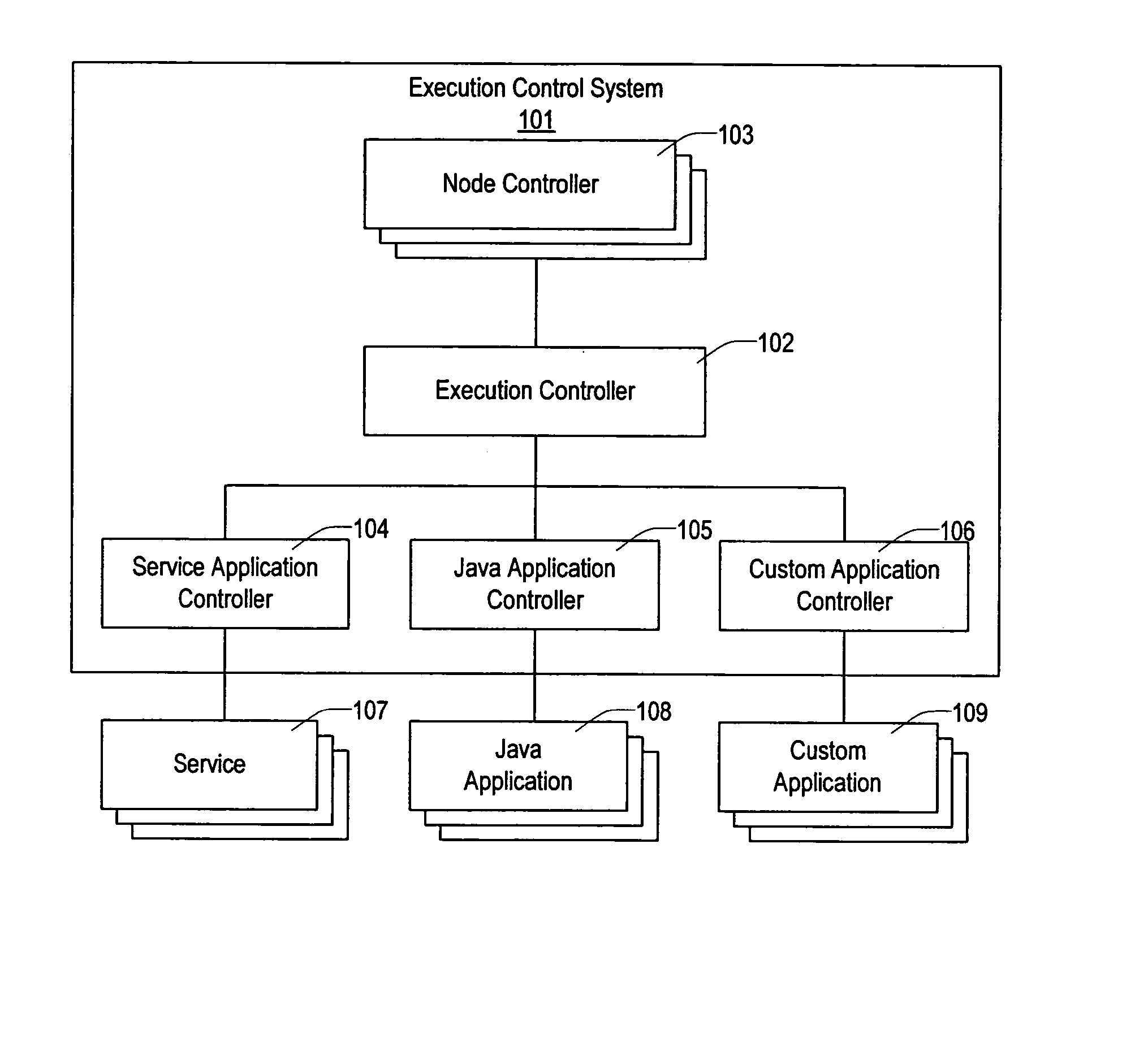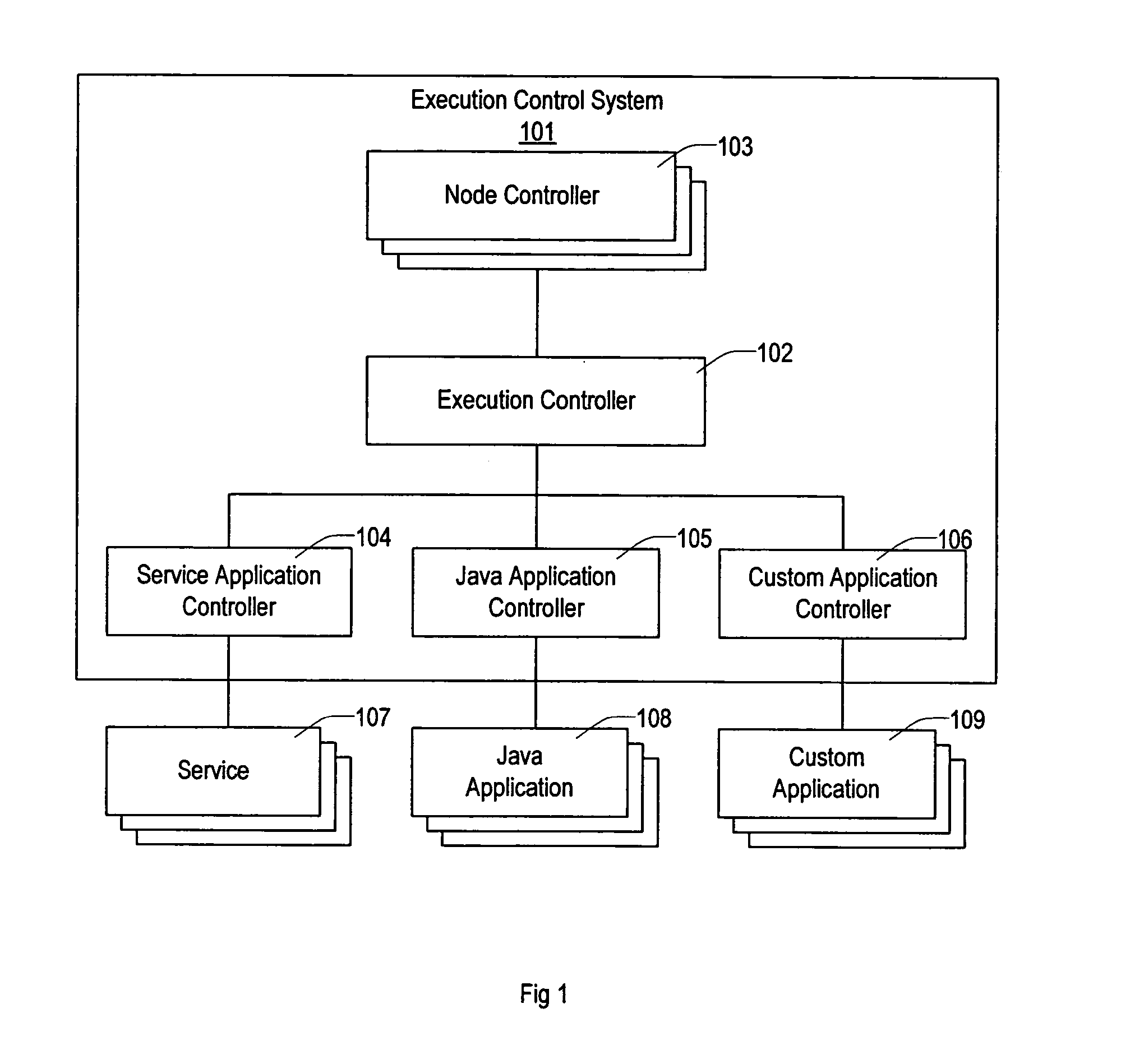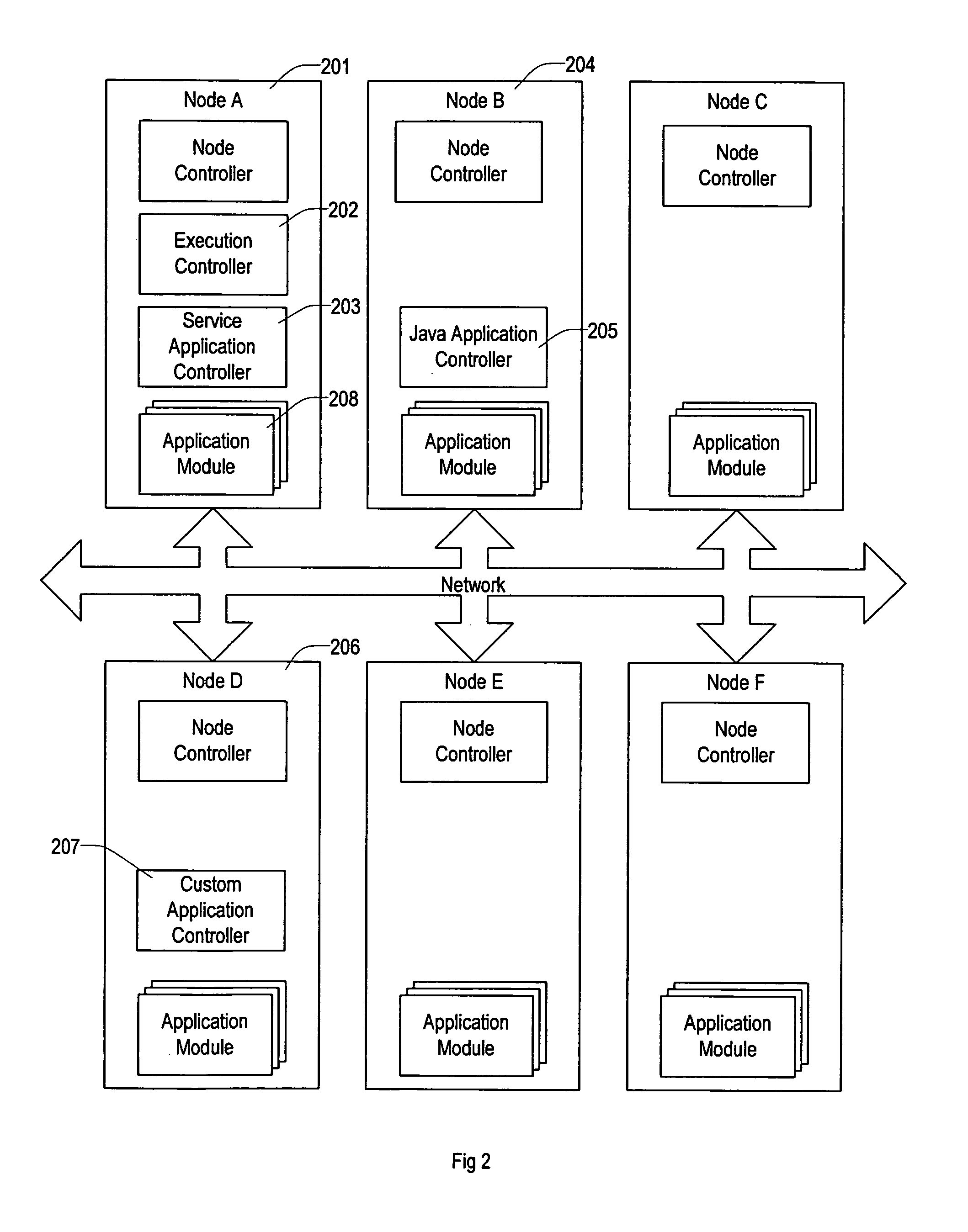While these platforms achieve performance scalability and continuous availability, they suffer from several drawbacks that have prevented their use for applications outside of the telecommunication market segment.
Their application programming model is not standard, which inhibits adoption of the platform by application developers.
Also, their application programming model is specific to the telecommunication application domain, and lacks the features required in other application domains.
Further, their architecture is tightly coupled with the proprietary application programming model and cannot be easily extended to support other application programming models, such as the Java 2 Platform, Enterprise Edition (“J2EE”) model.
In addition, the applications of these systems use a proprietary, often complex, platform application programming interfaces (“API”) to achieve performance scalability and continuous availability.
As each telecommunication platform uses a different API, application developers are unwilling to learn these APIs, which severely limits the adoption of the platforms.
The inclusion of such logic in the applications raises the barrier for developing applications.
Furthermore, as the control logic is limited to a single application, the platform cannot easily optimize the execution of multiple applications, and the control logic in multiple applications can contradict each other.
Some platforms cannot optimally distribute applications across the nodes of a distributed computer system if some nodes have higher CPU capacity than other nodes, and others require that the nodes all of the same type (for example, the nodes must be Intel processor-based computers running Linux).
Lastly, some platforms, especially those for high-availability applications, dramatically restrict the network topology and sometimes require a “static” configuration (for example, an application can run only on two nodes and would not work if the system changed the number of nodes).
The main drawbacks of these clustering frameworks include the following.
The distribution model is limited to services with restartable processes.
This simplistic model does not work for applications that are composed of fine-grained distributable modules that are smaller than a process.
For example, the service distribution model does not work for J2EE applications and cannot be easily extended to do so.
Also, The framework does not provide a single-system view to management tools.
The administrative complexity of administering each node individually prevents the frameworks from being used in distributed computer systems with large number of nodes.
Additionally, most frameworks do not allow mixing nodes of different processor architectures, or nodes running different operating systems.
Their application programming model is limited to scientific applications.
The programming model does not support other important applications types, such as transaction processing applications, Web services, database services, or telecommunication applications.
Also, they do not provide the application availability typically required by enterprise and telecommunication applications, such as those listed in the previous item.
The main limitations of this type of system include the following.
Using multiple different software platforms increases the administrative complexity of the distributed computing environment.
Therefore, J2EE clustering platforms cannot be used generally for applications that have in-memory state spanning transaction boundaries.
For example, it would be difficult or impossible to use clustered J2EE servers to run distributed non-J2EE Java applications or telecommunication call-control applications with in-memory state.
Additionally, they do not provide single-system images of the computing resources.
This makes the system harder to use with a large number of nodes.
The main drawbacks of this type of system include the following.
The mechanism seems to be limited to Java applications.
Second, each application typically includes a “control module”.
If the state could not be reconstructed, the applications associated with the failed control module must be stopped and restarted, at least in some systems, which is unacceptable for most applications that require continuous availability.
Therefore, the control modules are likely to contain more bugs than the platform that is developed and well tested by experts in the field.
As a software error in one of the control modules could negatively impact the operation of the entire platform, including other applications, the use of control modules may reduce the overall reliability and availability of the entire distributed computer system.
Many of the prior-art systems suffer from one or both of the following flaws.
First, some systems using prior art distribute the replicas across the nodes such that after a failure of node, another node in the system will take over the entire workload of the failed node.
The disadvantage of this approach is that the capacity of the system (and its price) is doubled in order to handle a node failure (these systems are sometimes called 2-N availability (or 2-N redundancy) systems because twice as many nodes are used in order to tolerate a single node failure).
Second, some other systems of prior art distribute the replicas of execution modules across the nodes such that after a failure of any node, all the remaining nodes take over a portion of the workload of the failed node (these systems are often called N+1 availability (or N+1 redundancy) systems because only one extra node is required to tolerate a single node failure).
The main problem with this approach is that if the number of nodes is high, the exposure to a double node failure could become significant.
With a double node failure (when a second node fails shortly after the failure of a node), the state of an application could be lost because the state was replicated across the two failed nodes.
 Login to View More
Login to View More  Login to View More
Login to View More 


